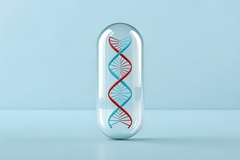CSPI calls on USDA to update school snacks’ nutrition standards

19 Oct 2023 --- The Center for Science in the Public Interest (CSPI) is advising that the USDA introduce limits on added sugars, the elimination of harmful sweeteners and dyes in “Smart Snacks” sold in school cafeterias around the country. The USDA has set Smart Snacks nutrition and ingredient regulations, but these do not align with its most recent Dietary Guidelines for Americans.
Smart snacks refer to the snacks, entrées and beverages competing with the federally reimbursable meals provided under the national school lunch and breakfast programs.
“The standards regulating Smart Snacks should protect children from adverse health outcomes and should be aligned with the latest scientific evidence and the recommendations of the most recent Dietary Guidelines for Americans. However, the current Smart Snacks standards do not address added sugars, low-calorie sweeteners, or synthetic dyes,” Samuel Hahn, policy coordinator at the CSPI, tells Nutrition Insight.
Health concerns
A recent analysis conducted by the CSPI revealed that out of the 623 different types of Smart Snacks examined, half are too high in added sugar, artificial sweeteners and synthetic dyes.
“Most children in the US consume too much added sugars, and excessive intake of foods or beverages high in added sugars is associated with dental decay and weight gain, which may increase the risk for cardiovascular disease.”  The Smart Snacks provided in school cafeterias have been shown to not abide by the USDA’s Dietary Guidelines for Americans.
The Smart Snacks provided in school cafeterias have been shown to not abide by the USDA’s Dietary Guidelines for Americans.
The research detected problematic low-calorie sweeteners in more than one-third of beverages sold in cafeterias, including diet sodas, some diet teas, two fruit drinks and flavored waters.
“CSPI advises that children avoid all low-calorie sweeteners, but we are especially concerned about aspartame, acesulfame potassium, saccharin and sucralose due to cancer concerns. There is compelling evidence that aspartame is a carcinogen, which the World Health Organization recently classified as ‘possibly carcinogenic to humans’.”
“Synthetic dyes are linked to attention and behavioral issues in some children, and Red 3 is a known carcinogen,” he continues.
Addressing the problem
Earlier this year, the USDA proposed updates to the school meal nutrition standards, separate from the regulations for Smart Snacks, and the department is set to finalize those new regulations in 2024.
“In the updated nutrition standards for school breakfast and lunch, the USDA should set science-based limits for sodium and added sugars, require more whole grains and ban harmful low-calorie sweeteners and synthetic dyes. In response to our report, the USDA should also take on rulemaking to update Smart Snacks standards to limit added sugars and ban harmful low-calorie sweeteners and synthetic dyes,” Hahn contends.
He argues that Congress should increase schools’ reimbursement rate for each meal served and provide more funding for kitchen equipment, training and technical assistance.
“States should continue passing legislation to provide all children free, healthy school meals and set strong nutrition standards statewide. Congress should follow this lead and pass federal legislation providing free, healthy school meals to all children nationwide. Schools can also adopt strong local wellness policies that address sodium, added sugars, low-calorie sweeteners, and synthetic dyes.”
Industry impact
Hahn asserts that food and beverage manufacturers have already made progress in improving their K-12 products by reducing sodium and increasing whole grains in response to standards previously set by the USDA.
Some have also taken steps to reduce added sugars and remove harmful low-calorie sweeteners and synthetic dyes in response to school food professionals, parents, and advocates demanding better school foods.  CSPI’s recent analysis of Smart Snacks reveals that half are too high in added sugar, artificial sweeteners and synthetic dyes.
CSPI’s recent analysis of Smart Snacks reveals that half are too high in added sugar, artificial sweeteners and synthetic dyes.
“We want manufacturers to build on that progress by reducing sodium and added sugars without switching to alternative sweeteners. Transitioning away from foods and beverages sweetened with harmful low-calorie sweeteners and instead offering more unsweetened options to the K-12 market, removing synthetic dyes and switching to safe alternatives already available.”
“If the USDA updates Smart Snacks standards to align with the most recent Dietary Guidelines for Americans and the compelling scientific evidence of the potential harms posed by certain low-calorie sweeteners and synthetic dyes, then manufacturers will need to reformulate their K-12 products to be lower in added sugars and free from harmful low-calorie sweeteners and synthetic dyes.”
He concludes by pointing out that manufacturers should also adjust the kinds of products they sell to K-12 schools, asserting that the CSPI recommends that beverage manufacturers transition away from diet sodas and sugary drinks to unsweetened, flavored seltzers.
A study published earlier this year argued that the US should do more to address the presence of ultra-processed food in school cafeterias, with co-author Jean Mayer, professor of Nutrition at the Friedman School of Nutrition Science and Policy at Tufts, pointing to the current regulations on Smart Snacks as particularly worrying.
Another recent study suggested that up to 12% of children could be addicted to UPFs, owing to their unique impact on the gut and the brain.
By Milana Nikolova












